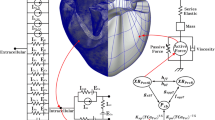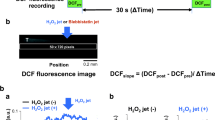Abstract
The enhancement of force of contraction (FOC) following increasing frequencies of stimulation is an important mechanism of positive inotropy in human myocardium. The present study aimed to investigate the influence of alterations in Na+ influx on FFR in human myocardium. Isometric FOC of electrically stimulated right auricular trabeculae (AUT, n=12) from human nonfailing hearts (n=8) was measured at different stimulation rates (0.5-3 Hz) under control conditions, after increasing Na+ influx by the addition of (±)BDF 9148 (BDF, 3 µmol l-1) and after decreasing Na+ influx by the addition of lidocaine (LIDO, 10 µmol l-1). Additionally, the rate dependent changes in diastolic tension (DT) were measured in all experiments. Under control conditions FOC increased with increasing frequencies of stimulation. The rate at which maximal FOC was observed (SFmax) was 2.0±0.2 Hz and maximal increase in FOC (PIEmax) by increasing frequency of stimulation was +1.5±0.5 mN. After increase of Na+ influx by BDF (3 µmol l-1) SFmax was decreased to 0.8±0.1 Hz (p<0.05 versus control) and PIEmax was +0.1±0.3 mN (p<0.05). When Na+ influx was diminished by LIDO (10 µmol l-1) SFmax and PIEmax were increased compared to control (2.4±0.1 Hz and +4.1±0.9 mN, p<0.05 versus control). The diastolic tension (DT) of AUT at 3 Hz was not changed at higher rates in the control group and after application of LIDO (10 µmol l-1), whereas after enhancement of Na+ influx by BDF there was an increase in DT of +0.7±0.2 at 3Hz (p<0.05 versus control and LIDO). An enhanced Na+ influx leads to a decrease in the optimal frequency and to a smaller force potentiation by higher stimulation rates which could be at least partly due to incomplete relaxation at higher frequencies, whereas a reduced Na+ influx is followed by opposite alterations. It is concluded that besides Ca2+ handling also Na+ influx and Na+ homeostasis might determine the frequency-induced force potentiation in human myocardium. Thus, the negative FFR in diseased human myocardium might result from changes in cellular Ca2+ or Na+ regulatory sites.
Similar content being viewed by others
Author information
Authors and Affiliations
Additional information
Received: 20 November 1996 / Accepted: 21 February 1997
Rights and permissions
About this article
Cite this article
Müller-Ehmsen, J., Brixius, K., Schulze, C. et al. Na+ channel modulation and force-frequency relationship in human myocardium. Naunyn-Schmiedeberg's Arch Pharmacol 355, 727–732 (1997). https://doi.org/10.1007/PL00005006
Issue Date:
DOI: https://doi.org/10.1007/PL00005006




